Buying in B2B rarely happens in a straight line. I have watched a founder see a LinkedIn ad on Monday, a director search Google on Wednesday, and a committee member click an email two weeks later before booking a demo. Who gets the win? If you have been whipsawed by conflicting dashboards and finger-pointing, you are not alone. I focus on what actually grows pipeline and revenue without making a team babysit vanity metrics.
Who Gets the Credit When a Customer Clicks Multiple Ads? Multi-touch attribution
Short answer for CEOs: credit should be shared across touchpoints with a multi-touch approach. One channel rarely carries the deal on its back. People scroll, search, compare, ask peers, and circle back. Giving all the credit to the last click - or the first - skews reality and produces budgets you cannot defend.
The core problem looks simple but is not. Ad platforms are incentive-driven and will claim full credit when they can. A Meta click on Monday and a Google Ads click on Wednesday can both report the same $10,000 deal as theirs. Now dashboards show $20,000 from a $10,000 sale. In B2B, long cycles multiply the confusion. Deals stretch across months, with multiple contacts engaging across channels. If reports ignore those touches, smart budgets become guesswork.
A better answer is multi-touch attribution that shares credit based on how people actually buy. It looks at the whole trail, not just one footprint, deduplicates at the person or account and opportunity level, and reduces the double counting that inflates ROI and masks underperforming spend.
In this article, I cover:
- Outcomes that matter for B2B marketing attribution, including CAC, LTV, and sales velocity
- Channel-level attribution that avoids biased platform reporting
- Campaign-level structure with UTMs and CRM mapping
- Sales and marketing attribution a CRO and CFO can trust
- Models that fit long cycles and buying committees
- Metrics and a concise scorecard to guide weekly budget calls
For a deeper primer on how journeys get tracked and credit is assigned, see Attribution Deep Dive: Tracking Customer Journey and Attribution Deep Dive: Matching Customer Touchpoints to Marketing Channels.
It’s All About Business Outcomes in B2B Marketing Attribution
B2B marketing attribution is not a scoreboard for clicks. I use it to tie spend to pipeline created, SQL quality, opportunity win rate, and sales velocity. If those do not move, nothing else matters. CEOs care about reducing customer acquisition cost, improving the LTV to CAC ratio, and hitting payback windows that keep cash flow healthy. Attribution is how I defend where dollars go and why they stay.
Ownership is the missing piece on many teams. Leaders want partners who do not shrug when results wobble. A clean attribution setup creates accountability by showing which channels and campaigns produce revenue and which just keep SDRs busy. When I can point to a shared view of reality, I reduce debate in leadership meetings and keep budget decisions tight.
Board-level metrics demand this clarity. The CFO wants to see actual return by channel and campaign, period. The CRO wants the truth about conversion rates through the funnel and how marketing affects sales velocity. When attribution feeds those insights, the conversation shifts from opinions to plans.
Attribution by Channel
Each channel plays a different role, and each platform is biased in its own UI. Meta often inflates view-throughs. Google Ads defaults tend to favor last click in many reports. Organic search captures intent that often starts elsewhere. I treat every platform dashboard as one perspective, not the source of truth.
How I approach each major channel:
- Paid search: Strong for demand capture on high-intent queries. I watch for brand search cannibalizing other channels and validate return with analytics, call tracking where relevant, and CRM closed-won records.
- Paid social: Great for demand creation and retargeting. Self-attribution can be inflated by view-through windows. I pair platform data with first-party analytics and CRM, and I use time-delay conversion curves to set expectations.
- Organic search: A steady driver of cost-efficient pipeline. I separate non-brand and brand traffic; branded search often assists other channels. I confirm impact in CRM using opportunity cohorts.
- Organic social: A trusted touch in the dark funnel. I tag links with UTMs and capture self-reported “How did you hear about us?” responses to reveal shadow impact.
- Email: Critical for nurturing buying committees. I attribute direct conversions and assists - not just last-touch form fills.
- Referral or partner: Often high intent and higher win rates. I track with unique UTMs and confirm in CRM via opportunity source fields and partner association.
- Direct: A catch-all that often hides assists from brand and social. I reduce noise with better UTMs and by stitching sessions where possible.
Data sources I triangulate:
- Ad platforms: Google Ads, Microsoft Advertising, LinkedIn, Meta
- Analytics: GA4 and product analytics where applicable
- First-party: tracking pixels, landing page forms, and post-demo or post-purchase surveys - see the ThoughtMetric Help Center for practical setup guidance
- Call tracking for phone-heavy cycles
- CRM (Salesforce or HubSpot) as the ground truth for pipeline and revenue
- Data pipelines and warehouses to consolidate and transform touch data
A reality check: privacy shifts (for example, iOS changes and third-party cookie loss) mean I rely more on first-party data, modeled conversions, and lift tests. That does not make attribution futile - it just means I combine deterministic tracking with experiments and triangulation.
Campaign Attribution
Campaigns tell the story of creative, offer, and audience. Get the structure right and the story becomes easy to read. Get it wrong and the weekly meeting becomes a guessing game.
I start with a clean UTM taxonomy:
- Source: where the click happened (for example, google, linkedin, meta, partner)
- Medium: type (for example, cpc, social, email, referral)
- Campaign: theme or audience (for example, 2025-q1-demand-gen-b2b-services)
- Content: creative variant (for example, feed-video-a or lead-magnet-ebook)
- Term: paid search keyword (for example, b2b-it-support)
Naming conventions must be shared, simple, and enforced. I keep a master reference, freeze it before major launches, and map each UTM set to a unique campaign record in the CRM. That lets me show how a campaign moves people from MQL to SQL to Opportunity to Closed Won.
Not all campaigns do the same job:
- Demand creation: thought leadership on LinkedIn, product stories on YouTube, or a strong POV in content. I expect lower immediate conversion but meaningful assists and a lift in branded search.
- Demand capture: paid search on high-intent queries, comparison pages, partner referrals. I expect faster progression to SQL and higher close rates.
B2B nuances matter. Buying committees usually include multiple people. A CFO might hit pricing late. A technical lead might attend a webinar early. My model must capture both so I can fund the whole journey. It is tempting to cut a top-funnel campaign that does not claim last click - that often slows pipeline downstream.
Attribution Between Sales and Marketing
The fastest way to kill trust is a fuzzy handoff. I define each stage and enforce rules so no one argues when numbers move.
Clear definitions I use:
- MQL: known contact who meets ICP and shows intent based on a score or agreed trigger
- SQL: accepted by sales after discovery, fits ICP, and is worth pursuit
- Opportunity: a defined deal in the CRM with stage, amount, and close date
- Closed Won: signed and invoiced or live, aligned with finance definitions
CRM hygiene keeps attribution clean. I require fields like Opportunity Source, Primary Campaign, and Lead Source Detail. I associate every opportunity with all contacts in the buying group, not just the form filler. If selling into accounts, I log touches at the account level too.
Self-reported attribution belongs in the mix, not as the only source. I add an open-text form field asking “How did you first hear about us?” and compare those responses with tracked data. “Heard on a podcast” or “saw on LinkedIn” often appears even when last click was Google. I reconcile by counting both the tracked touch and the self-reported channel as assists in the warehouse or BI layer. That closes the gap between dark-funnel influence and hard clicks.
Finally, I create a feedback loop. Sales notes on calls, reasons for disqualification, and competitor mentions sharpen targeting and creative. Marketing insights on campaigns with high SQL-to-close rates help reps prioritize.
Attribution Models
Not every model fits every motion. Longer cycles and multiple people per deal require models that reflect that reality.
A quick tour:
- First touch: 100% credit to the first interaction. Useful for seeing what opens doors; risky for budget shifts because it ignores later influence.
- Last touch: 100% credit to the final interaction before conversion. Handy for short cycles; risky in long cycles because it overspends on bottom-funnel clicks.
- Linear: splits credit evenly. Simple and fair, but treats every touch as equal.
- Time-decay: more credit to recent touches. Good for current spend and retargeting; can shortchange the initial spark.
- Position-based (U-shaped): overweights first and last with the middle sharing the rest. Strong for longer cycles where entry and close both matter.
- W-shaped: overweights first touch, a key mid-journey touch (for example, demo request or pricing view), and the last touch. A strong fit for buying committees and multi-month deals.
- Data-driven or algorithmic: weights touches based on observed impact. Requires volume but can match your motion closely.
My practical hybrid:
- I use a position-based or W-shaped model for planning. It funds top, mid, and bottom touches.
- I use time-decay for near-term budget tweaks. It favors recent interactions when markets shift.
Whatever the choice, I document rules: lookback windows by channel, treatment of view-throughs, and how offline touches (events and calls) enter the model. Platform dashboards will not follow those rules; my warehouse and BI are the source of truth.
Key Attribution Metrics
Executives care about money in and money out. Attribution should speak that language clearly.
Metrics I prioritize:
- CAC: total acquisition spend divided by new customers, tracked by channel and campaign
- LTV to CAC: value over time relative to cost; many boards look for greater than 3:1, but targets vary by ACV and margins
- Pipeline created: qualified opportunity value tied to marketing touches (sourced and assisted)
- Revenue: closed-won value connected to touches, channels, and campaigns
- Payback period: months to recover CAC; shorter is safer in uncertain markets
- SQL rate: share of MQLs accepted by sales; signals quality and targeting
- Opportunity win rate: percentage of opportunities that close; isolates overpromise or sales enablement gaps
- Assisted conversions: deals influenced by a channel or campaign without last-click credit; crucial for demand creation
- Incremental lift: measured effect when a channel or campaign turns on or off (geo-splits or audience-based tests help here)
For a single source of truth, I feed ad platforms, analytics, marketing automation, call tracking, and CRM data into a warehouse, standardize UTMs, map touches to contacts or accounts, and assign model credit. Then I build a weekly scorecard in a BI tool.
A working scorecard shows:
- Spend, CAC, and payback by channel
- Pipeline and revenue by campaign, split by sourced and assisted
- SQL rate and win rate by segment or offer
- Trend lines for branded search volume after launches
- Notes for context when a new offer or macro event shifts performance
Teams that track this way stop arguing and start reallocating. You see where SEO compounds, where paid search cannibalizes, and where LinkedIn thought leadership quietly lifts direct demo requests.
Summary
Attribution in B2B is not a vanity exercise. It is a shared language for marketing, sales, and finance that keeps budgets focused on growth. Multi-touch attribution aligns with how people buy. A CRM-integrated setup creates accountability. And model choices should reflect sales cycles and buying committees, not ad platform defaults.
My rules of thumb:
- I treat platforms as inputs, not truth. I resolve credit in my own model.
- I structure UTMs and campaign names before launch so chaos does not creep in under pressure.
- I map every touch to the CRM, use contact roles, and connect all decision makers to deals.
- I combine tracked data with self-reported answers; both matter.
- I pick one model for strategy and one for weekly budget shifts, document the rules, and stick to them.
- I report dollars, not just units. CAC, LTV to CAC, pipeline, and revenue come first.
- I review weekly and reallocate in measured steps based on the scorecard, not hunches.
Done well, B2B marketing attribution lowers risk on SEO and paid investments, funds what actually moves the sales needle, and frees leaders from endless debates over whose click counted most. It is not glamorous, but it makes every part of the go-to-market machine steadier, faster, and easier to defend when the board asks, what worked and why.

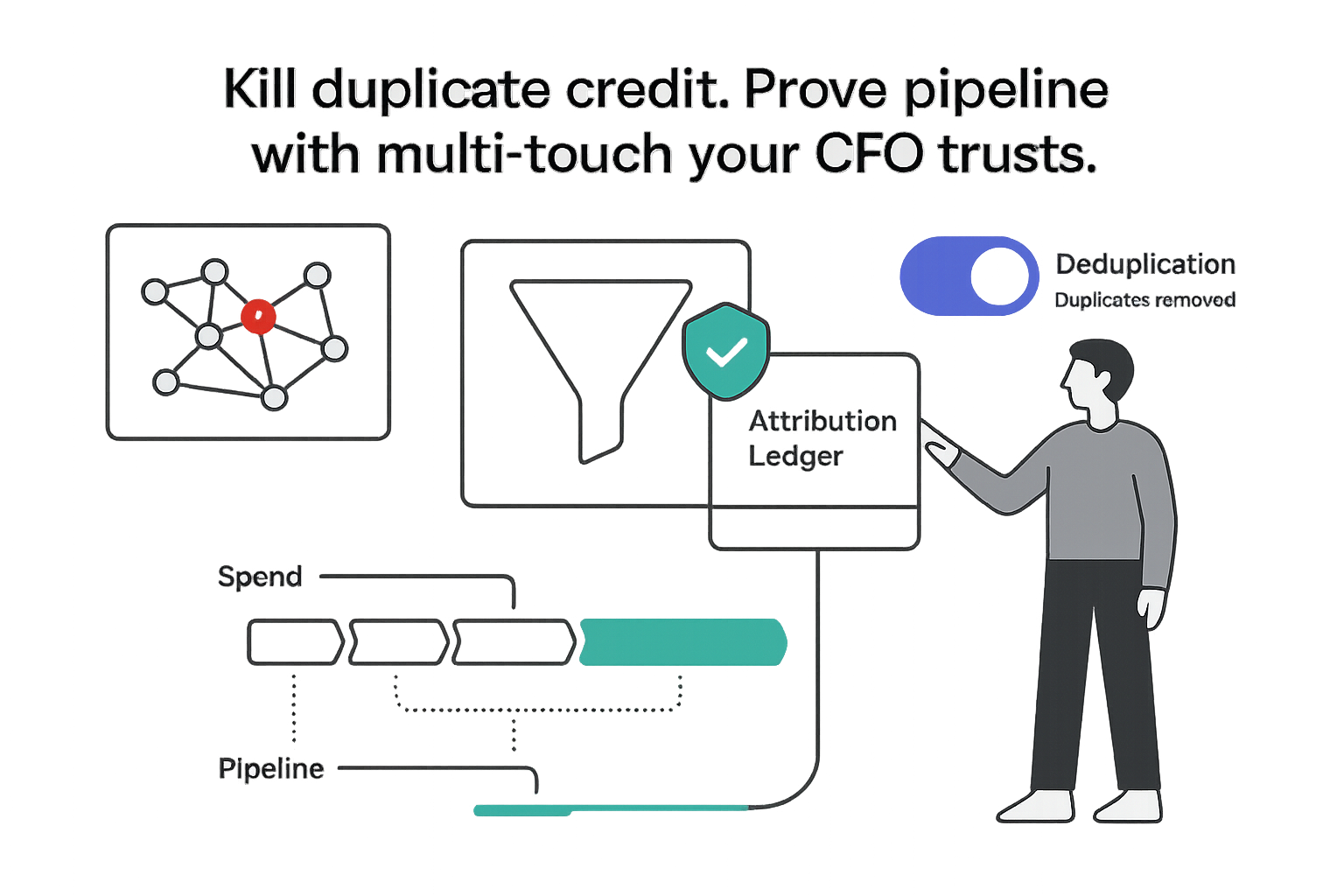

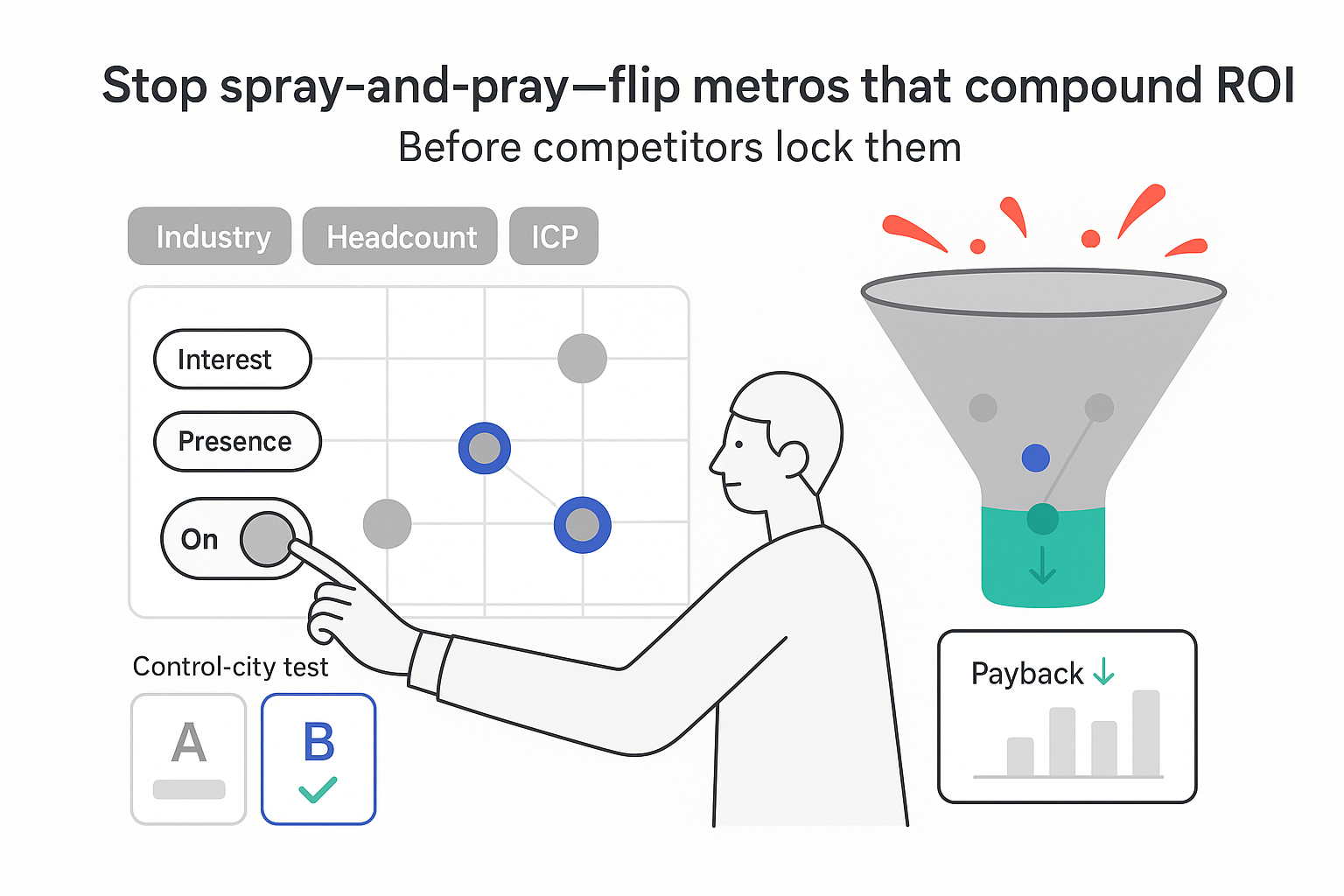
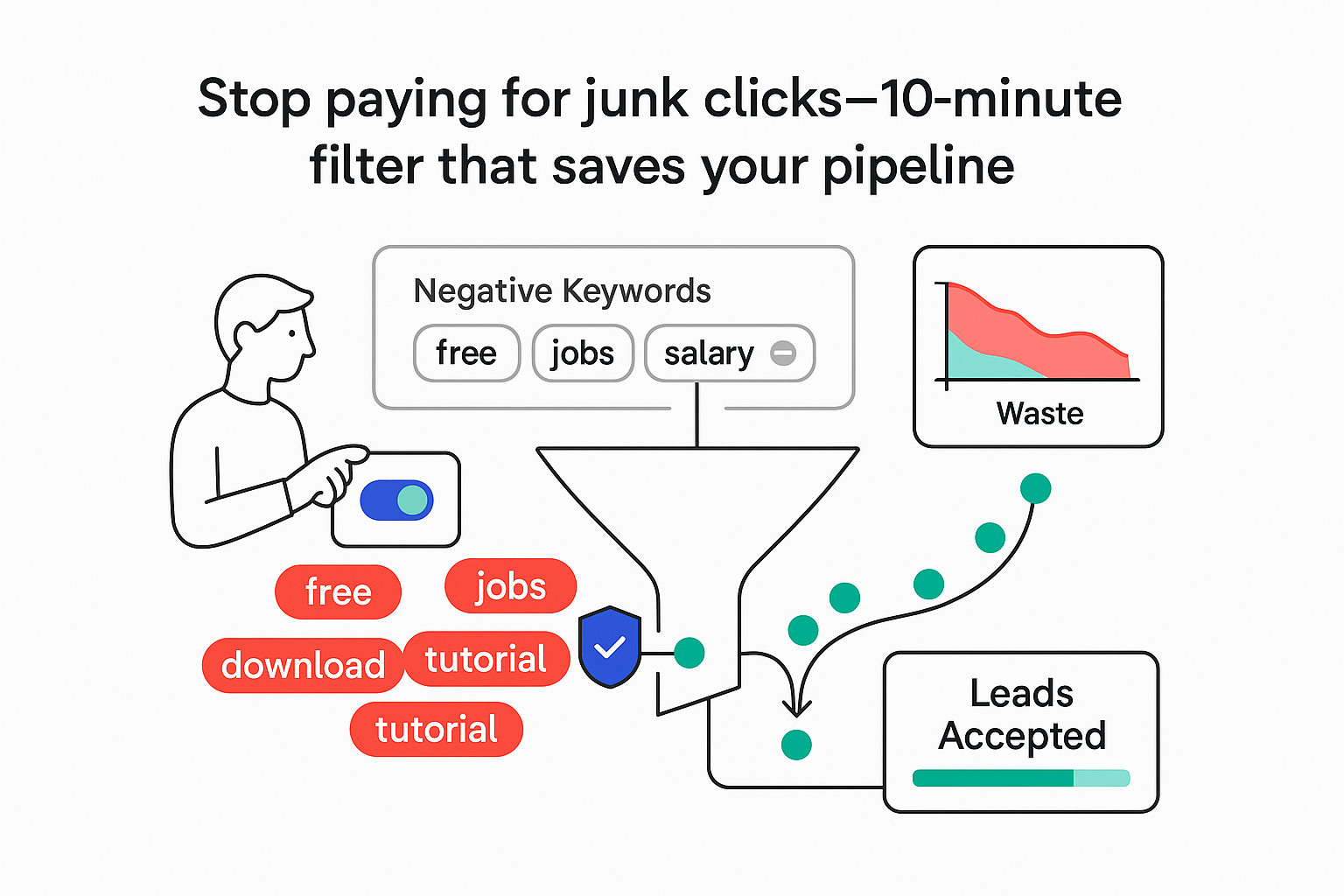
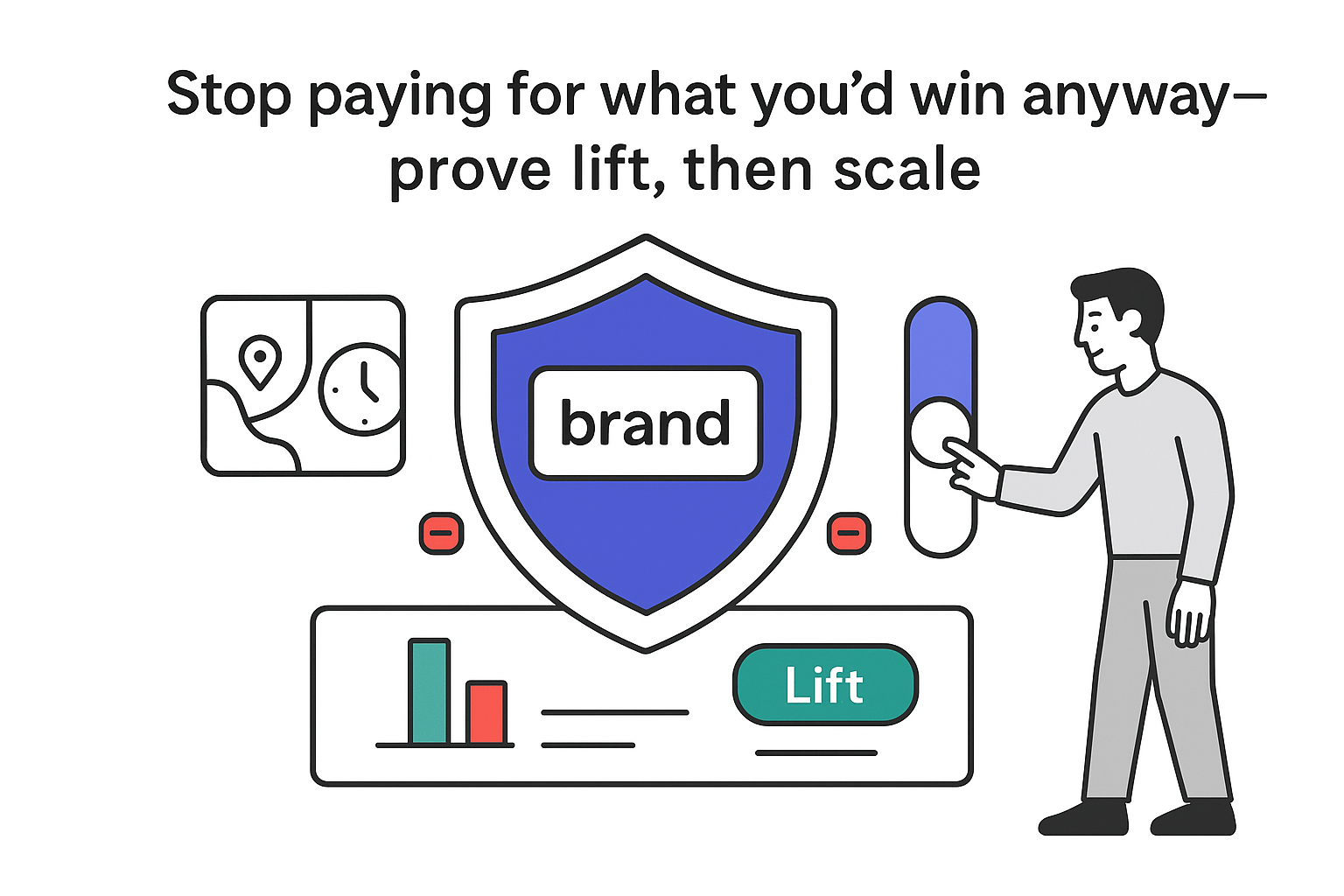
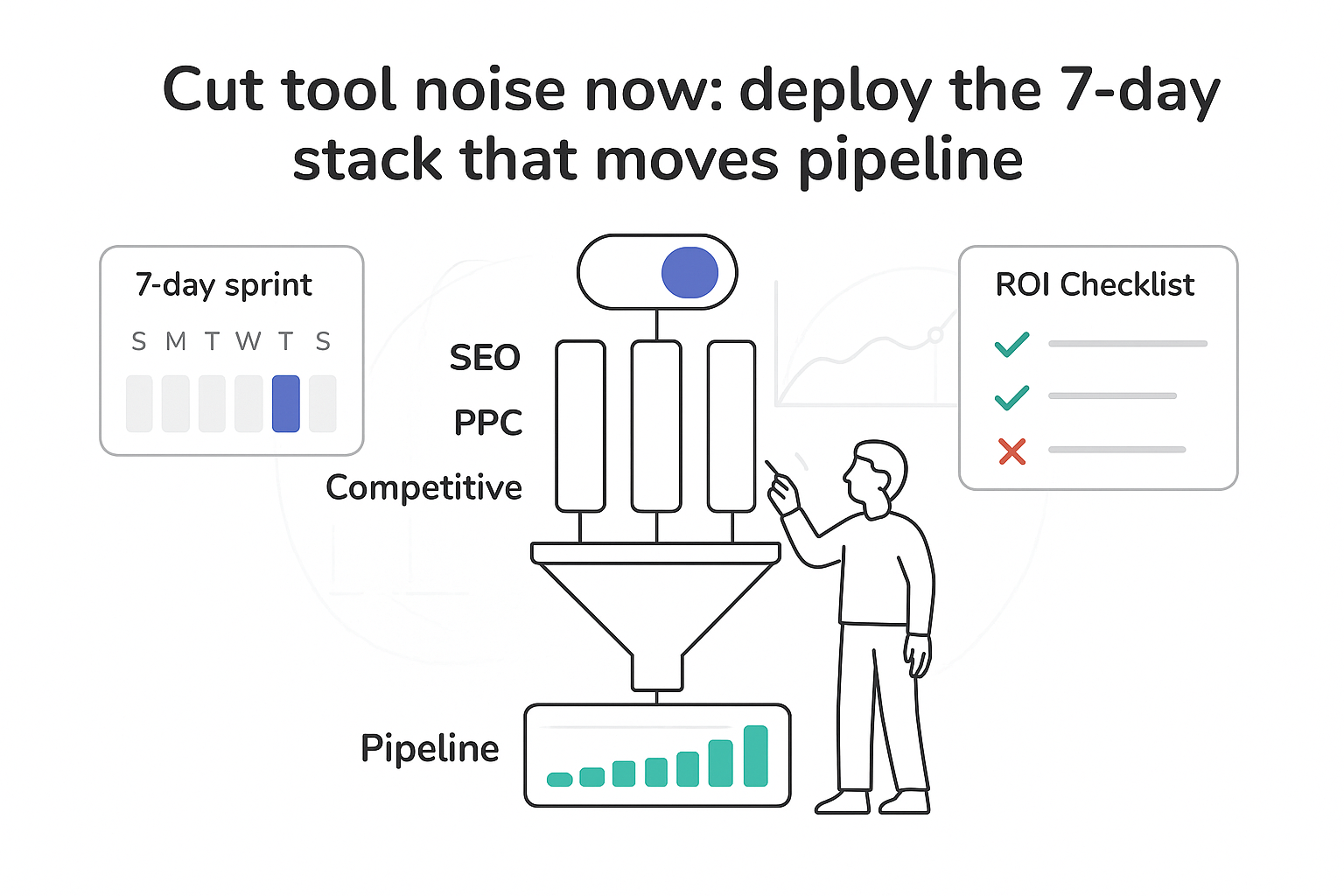
.svg)